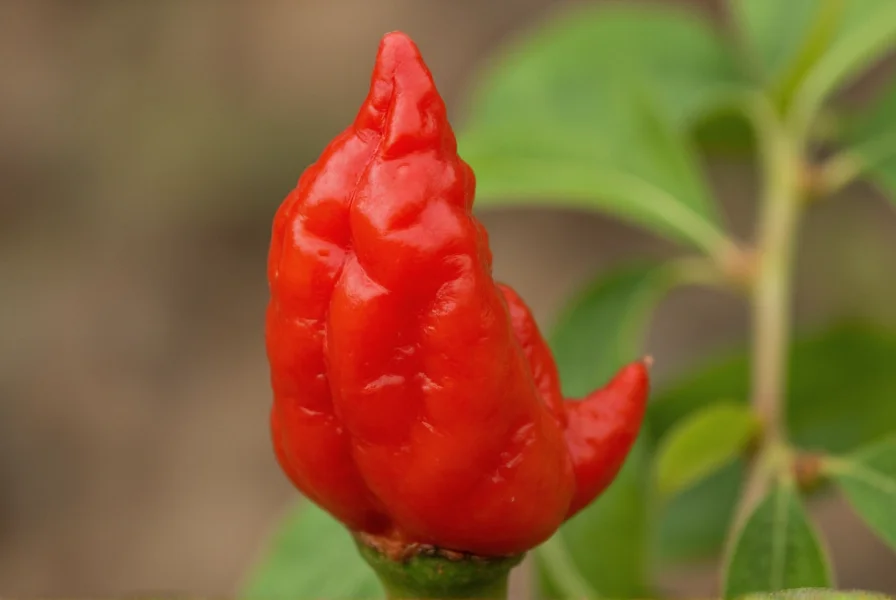The ghost chili's extraordinary heat level places it among the world's hottest peppers, though it's been surpassed by newer varieties like the Carolina Reaper. Understanding exactly how many scoville units is a ghost chili requires examining both the measurement methodology and natural variations in pepper heat.
What Are Scoville Heat Units?
Developed by pharmacist Wilbur Scoville in 1912, the Scoville scale measures the pungency (spicy heat) of chili peppers. Originally determined through human taste testing, modern laboratories now use high-performance liquid chromatography (HPLC) to precisely measure capsaicinoid content—the compounds responsible for a pepper's heat.
While the original Scoville Organoleptic Test involved diluting pepper extract until the heat was no longer detectable by human testers, HPLC provides objective measurements that are then converted to Scoville units. This scientific approach has revealed that ghost pepper scoville measurement can vary significantly based on growing conditions, soil composition, and climate.
Ghost Chili: Beyond the Numbers
Officially certified as the world's hottest pepper by Guinness World Records in 2007 (a title later claimed by other varieties), the ghost chili (Capsicum chinense 'Bhut Jolokia') originates from Northeast India. The name "Bhut" means "ghost" in Assamese, referring to how the heat seemingly sneaks up on you.
Several factors influence how hot is a ghost chili in scoville units:
- Growing conditions: Stressors like inconsistent watering increase capsaicin production
- Plant maturity: Fully ripe peppers tend to be hotter
- Part of the pepper: The placenta (white ribs) contains the highest concentration of capsaicin
- Genetic variation: Different ghost chili strains exhibit varying heat levels
| Pepper Variety | Scoville Heat Units (SHU) | Heat Comparison to Ghost Chili |
|---|---|---|
| Ghost Chili (Bhut Jolokia) | 855,000–1,041,427 | 1x (baseline) |
| Carolina Reaper | 1,400,000–2,200,000 | 1.5–2x hotter |
| Habanero | 100,000–350,000 | 3–8x milder |
| Jalapeño | 2,500–8,000 | 100–300x milder |
| Bell Pepper | 0 | Infinitely milder |
Practical Implications of Ghost Chili's Heat Level
Understanding exactly how many scoville units in a ghost pepper has real-world consequences. At approximately 1,000,000 SHU, the ghost chili is about 400 times hotter than Tabasco sauce and 200 times hotter than a typical jalapeño. This extreme heat requires careful handling:
When working with ghost chilies, always wear gloves and avoid touching your face. The capsaicin can cause severe irritation to eyes and sensitive skin. Chefs often use just a small portion of a single ghost chili to flavor an entire dish, as the heat compounds are highly concentrated.
Despite its fearsome reputation, the ghost chili offers complex flavor notes beyond just heat—smoky, sweet, and fruity characteristics that make it valuable in culinary applications when used judiciously. Many hot sauce manufacturers blend ghost chili with other ingredients to create balanced products that showcase its unique profile without overwhelming the palate.

Safety Considerations with Extreme Heat Peppers
Consuming ghost chilies requires caution. The intense heat can cause temporary discomfort including sweating, flushing, and gastrointestinal distress. In rare cases, extremely spicy foods have been associated with more serious health issues like gastric distress or temporary blood pressure changes.
If you experience overwhelming heat after consuming ghost chili, dairy products (particularly milk) provide the most effective relief as casein helps break down capsaicin. Avoid drinking water, which can spread the capsaicin compounds rather than neutralizing them.
Understanding the scoville rating of ghost pepper isn't just trivia—it's essential information for safe handling and culinary use. Whether you're a home cook experimenting with hot peppers or a professional chef developing new recipes, respecting the ghost chili's heat level ensures both safety and better flavor outcomes.
Frequently Asked Questions
Is the ghost chili still the hottest pepper in the world?
No, the ghost chili held the Guinness World Record as the world's hottest pepper from 2007 to 2011, but has since been surpassed by peppers like the Carolina Reaper (1.4-2.2 million SHU), Trinidad Moruga Scorpion (1.2-2 million SHU), and Dragon's Breath pepper (2.48 million SHU). However, it remains one of the hottest commercially available peppers.
How does growing location affect ghost chili scoville units?
Growing conditions significantly impact ghost chili heat levels. Peppers grown in stressful conditions (inconsistent watering, temperature fluctuations, nutrient-deficient soil) typically produce more capsaicin as a defense mechanism. Ghost chilies cultivated in their native Northeast India often test at the higher end of the 855,000-1,041,427 SHU range compared to those grown in more controlled environments.
Can cooking reduce the scoville units of a ghost chili?
Cooking doesn't significantly reduce the Scoville rating of ghost chili peppers. Capsaicin is heat-stable and remains potent even after cooking. However, when incorporated into dishes with fats, sugars, or dairy, the perceived heat can be moderated as these ingredients help bind to and neutralize capsaicin compounds, making the overall dish more palatable despite the unchanged Scoville measurement.
How much ghost chili equals one jalapeño in heat?
Since a typical jalapeño measures 2,500-8,000 SHU and a ghost chili averages 1,000,000 SHU, one ghost chili equals approximately 125-400 jalapeños in heat intensity. This means even a small portion of a single ghost chili (about 1/125th to 1/400th of the pepper) contains as much heat as one whole jalapeño.











 浙公网安备
33010002000092号
浙公网安备
33010002000092号 浙B2-20120091-4
浙B2-20120091-4